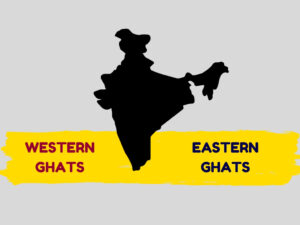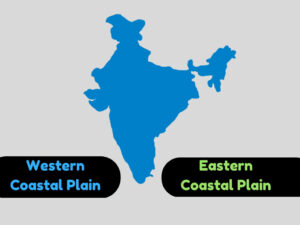The Eastern Ghats vs The Western Ghats
Welcome to this comprehensive article that explores the differences between the Eastern Ghats and the Western Ghats. Both of these mountain ranges are located in the Indian subcontinent and hold immense significance in terms of biodiversity, cultural heritage, and ecological importance. In this article, we will delve into what each of these mountain ranges is, examine examples of specific features and characteristics, discuss their uses, and highlight the key differences between them. Read on to discover the unique aspects of the Eastern and Western Ghats.
What are the Eastern Ghats?
The Eastern Ghats, also known as the Pūrva Ghaṭ or Khadirandi Hills, are a discontinuous range of mountains along India’s eastern coast. These ancient hills span over 1,750 kilometers and traverse the states of Odisha, Andhra Pradesh, Telangana, Tamil Nadu, and Karnataka. The Eastern Ghats are older and geologically more stable compared to the Western Ghats. They consist of low hills, plateaus, and valleys.
Examples of Eastern Ghats
- The Nallamala Hills, located in Andhra Pradesh, are a prominent subrange of the Eastern Ghats.
- The Javadi Hills, spanning across Tamil Nadu and Andhra Pradesh, are another noteworthy extension of the Eastern Ghats.
- Araku Valley, situated in the Visakhapatnam district of Andhra Pradesh, is a picturesque valley formed by the Eastern Ghats.
Uses of Eastern Ghats
The Eastern Ghats have significant ecological importance, hosting a wide variety of flora and fauna. They are home to several national parks and wildlife sanctuaries, acting as habitats for numerous endangered species. Additionally, these mountains serve as a watershed for many rivers, providing water resources for agricultural and industrial purposes. The Eastern Ghats also support the livelihoods of local communities through agriculture, forest products, and tourism.
What are the Western Ghats?
The Western Ghats, also known as the Sahyadri Mountains, are a UNESCO World Heritage Site and one of the eight “hottest hotspots” of biological diversity in the world. Spanning around 1,600 kilometers parallel to India’s western coast, they extend through the states of Gujarat, Maharashtra, Goa, Karnataka, Kerala, and Tamil Nadu. The Western Ghats are younger, taller, and geologically more fragile compared to the Eastern Ghats, characterized by steep slopes, high peaks, and lush green forests.
Examples of Western Ghats
- The Nilgiri Hills, located in the border region of Tamil Nadu, Karnataka, and Kerala, are a prominent subrange of the Western Ghats.
- The Anaimalai Hills, also known as the Elephant Mountains, are situated in the Western Ghats of Tamil Nadu and Kerala.
- The Palani Hills, located in Tamil Nadu, form another significant part of the Western Ghats.
Uses of Western Ghats
The Western Ghats are recognized as one of the world’s most biodiversity-rich regions. They are home to numerous endemic species, including plants, birds, and mammals. These mountains provide vital ecosystem services such as maintaining regional climate, regulating water flow, and supporting agriculture. The Western Ghats also contribute to indigenous culture and traditional knowledge, being an important spiritual and pilgrimage site for many communities.
Differences Table: Eastern Ghats vs Western Ghats
| Difference Area | Eastern Ghats | Western Ghats |
|---|---|---|
| Geological Age | Older and more stable | Younger and more fragile |
| Length | Over 1,750 kilometers | Approximately 1,600 kilometers |
| States Traversed | Odisha, Andhra Pradesh, Telangana, Tamil Nadu, Karnataka | Gujarat, Maharashtra, Goa, Karnataka, Kerala, Tamil Nadu |
| Topography | Low hills, plateaus, and valleys | Steep slopes, high peaks, and dense forests |
| Ecological Importance | Significant, hosts diverse flora and fauna | UNESCO World Heritage Site, one of the world’s biodiversity hotspots |
| Water Resources | Act as watershed for rivers | Regulate water flow, supporting agriculture and communities |
| Human Settlement | Fewer population centers | More densely populated, with major cities |
| Economic Importance | Supports livelihoods through agriculture, forest products, and tourism | Contributes to indigenous culture and traditional knowledge |
| Cultural Significance | Less prominent in terms of cultural heritage | Important spiritual and pilgrimage site for many communities |
| Conservation Status | Less well-known and explored | High priority for conservation and protection |
Conclusion
In conclusion, the Eastern Ghats and the Western Ghats are two distinct mountain ranges in India that exhibit unique characteristics and attributes. While the Eastern Ghats are older, more stable, and offer significant ecological value, the Western Ghats are younger, more fragile, and recognized as global biodiversity hotspots. Both mountain ranges provide valuable ecosystem services, support local livelihoods, and deserve conservation efforts to preserve their natural heritage for future generations.
People Also Ask
1. What is the length of the Western Ghats?
The Western Ghats extend for approximately 1,600 kilometers along India’s western coast.
2. Which states are the Eastern Ghats present in?
The Eastern Ghats traverse through the states of Odisha, Andhra Pradesh, Telangana, Tamil Nadu, and Karnataka.
3. Are the Western Ghats a UNESCO World Heritage Site?
Yes, the Western Ghats are recognized as a UNESCO World Heritage Site.
4. What is the major difference between the topographies of the Eastern Ghats and the Western Ghats?
The Eastern Ghats have low hills, plateaus, and valleys, while the Western Ghats have steep slopes, high peaks, and dense forests.
5. How do the Eastern Ghats and the Western Ghats contribute to the local economy?
The Eastern Ghats support livelihoods through agriculture, forest products, and tourism, whereas the Western Ghats contribute to indigenous culture and traditional knowledge, attracting visitors for spiritual and pilgrimage purposes.




